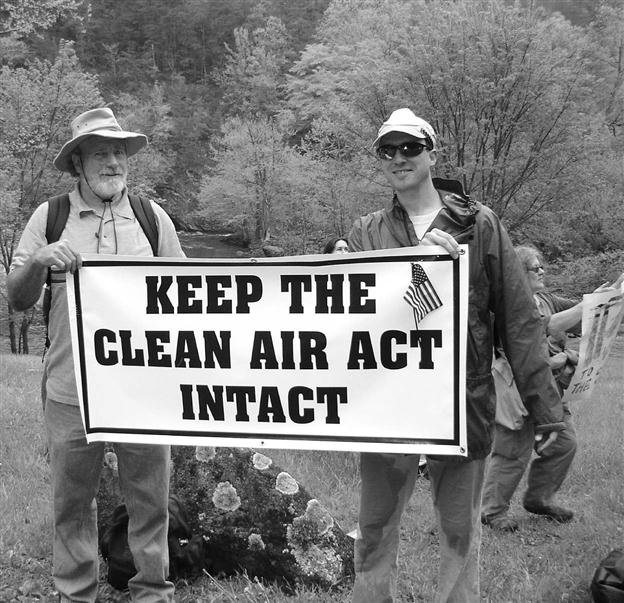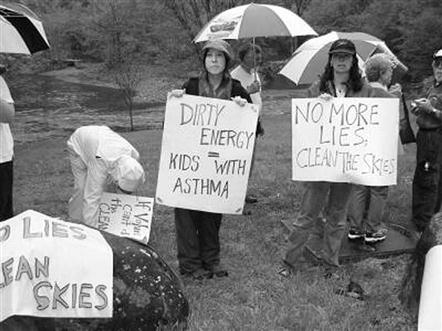Jonathan Bentley “You cannot affirm the power plant and condemn the smokestack, or affirm the smoke and condemn the cough.” —Wendell Berry, The Gift of the Good Land, 1981 When I returned to the United States from living abroad, my goal was to settle down in a beautiful rural area and build a life there. I was impressed by Western North Carolina’s richly forested mountains, kind people, plentiful rainfall, and huge tracts of protected land. But these blessings were marred by some of the worst air quality in the nation, due largely to pollution from motor vehicles and coal-fired power plants. My first impulse was to find another location with cleaner air, but I was reminded of Joe Louis’ famous line, “You can run, but you can’t hide.” Air pollution in the Smoky Mountains is a symptom of a much more pervasive disorder. Human-derived environmental contamination can now be found from pole to pole, at the highest mountain peaks, and at the bottom of the deepest ocean trenches (WHO, 2007). With this in mind, I decided to dig in and look for ways to directly address our local air quality problems. Fortunately, there were many other community members who valued clean air. In 2000, I met Avram Friedman, Executive Director of the Canary Coalition. This clean air advocacy organization had made significant progress with the people of the southern Appalachians and with state lawmakers in Raleigh. A prime example of this was North Carolina’s Clean Smokestacks Act, one of the nation’s strongest examples of clean air legislation. It promised to reduce emissions from the state’s 14 coal-fired power plants by 70% to 80% by 2010. With Avram’s guidance, I joined eight other Canary Coalition members on a lobbying trip to Raleigh to meet with state legislators and highlight citizen support for this important clean air legislation. One representative showed us stacks of postcards and lists of e-mails and phone calls he had received on this issue, with an overwhelming majority supporting the Clean Smokestacks Act (Ross, 2009). Other lawmakers were less sympathetic, but there were already clear signs that our grassroots work was speaking more loudly than the deep pockets of the coal and electric industries. In 2002, the North Carolina General Assembly signed the Clean Smokestacks Act into law with an overwhelming majority (Figure 97-1). The Canary Coalition’s name and logo are derived from the old practice of taking caged canaries down into mines as an early warning device. The canaries were more sensitive to poor air quality than were the miners, who would take heed if their canary stopped singing. If deadly fumes or low oxygen levels killed the bird, the miners knew they could quickly be the next to perish. The Canary Coalition stresses that Fraser firs, trout, asthma patients, older adults, and human fetuses are the modern-day “canaries” in our current environment (Box 97-1). These sensitive harbingers suffer from excessive ground-level ozone as well as dangerous levels of mercury, sulfuric acid, and nitrogen deposited on the earth by rain. Such toxins result from burning coal and other fossil fuels, and their health risks are well documented (NCDAQ, 2009a). Less understood are the extent and effects of global warming, which is related to the same outdated energy habits. Drawing upon Avram Friedman’s vision, dedication, and tireless leadership, the Canary Coalition pursues its goals through various methods, the most important of which is mobilizing public involvement. Education and public awareness are addressed at a personal grassroots level by talking with people at information booths and creating social events such as the 2005 Asheville Air Aid concert and the Blue Ridge Parkway Relay for Clean Air. The Canary Coalition also participates in high-profile protests in Raleigh and throughout Western North Carolina and amplifies the impact of these events by enlisting news media coverage. These events capture the attention of people who otherwise might not have even known that air pollution is a problem. They also reach people who want to help but didn’t know how. As a result, lawmakers hear more about the issues, and the Canary Coalition receives more support for its ongoing projects (Figure 97-2).
Taking Action
The Canary Coalition for Clean Air in North Carolina’s Smoky Mountains
The Canary Coalition at Work
![]()
Stay updated, free articles. Join our Telegram channel

Full access? Get Clinical Tree


Nurse Key
Fastest Nurse Insight Engine
Get Clinical Tree app for offline access


